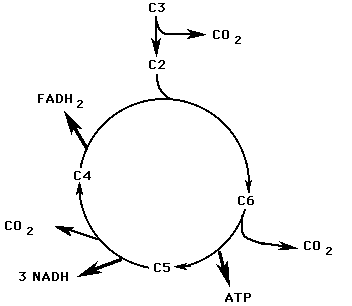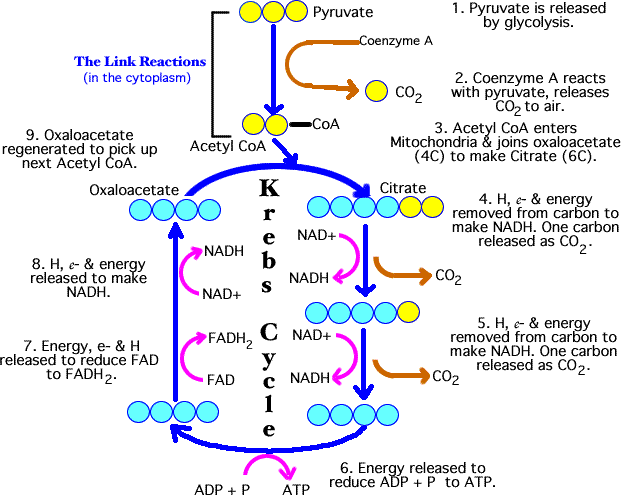The Krebs Cycle is the 2nd series of reactions occuring during Aerobic Respiration which result in the final breakdown of what remains of the original glucose.
a) Krebs cycle occurs in matrix.
b) Only occurs if O2 present.
c) Link Reaction: Pyruvate moves into matrix & reacts with coenzyme A (CoA) (via oxidative decarboxylation) to form Acetyl-CoA (2C). 1 CO2 & 1 NADH are released by this reaction.
Oxidative decarboxylation means the pyruvate is oxidized (by removal of H) & decarboxylated by removal of CO2.
|
Summary of One Turn of the Krebs
Cycle
|
| 1. Acetyl CoA (2C) enters the cycle & joins a 4C molecule. |
| 2. In a series of steps, the remaining H and high energy electrons are removed from the Acetyl CoA. |
| 3. Three NAD+ are converted into 3 NADH & 3H+. |
| 4. One FAD is converted into 1 FADH2. |
| 5. One ATP is made (by substrate phosphorylation). |
| 6. Two CO2 are released. |
| 7. At the end of the cycle, nothing remains of the original glucose molecule. |

